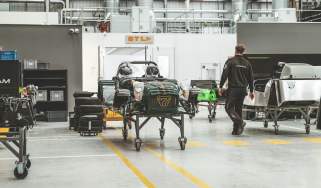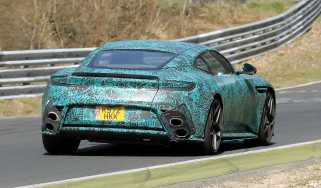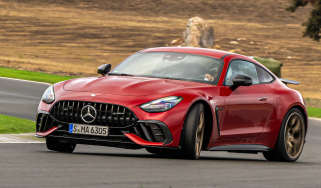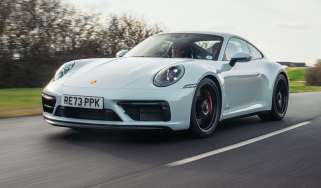Horsepower explained – what gives your car its performance?
We all know the figures but why are power and torque important to your car's driving experience?

Two words are synonymous with how we define the performance of a car’s engine: power and torque. While these terms are often bandied about by enthusiasts to demonstrate the superiority of one car over another, they represent distinct concepts that play critical roles in determining how a car performs.
‘Power is how fast you hit the wall while torque is how far you push the wall’ is one of many pithy expressions that aim to simply explain the relationship between the two, but none of them can really sum up the correlation between the two in a simple sentence.
What is Power?
As we all know horsepower is the most commonly used measurement in the automotive world but it was originally coined by Scottish engineer James Watt in the 18th century. He was keen to demonstrate that his new steam engine could do the work currently being done by horses so he needed to come up with a formula of how much work one horse could do and prove his engine was superior. He devised an equation based on horses drawing water up a well where one horsepower was the power required to lift 33,000 pounds exactly one foot in one minute.
By introducing time into the equation power became a measure of how quickly work could be done and when it comes to car engines it represents the engine’s ability to sustain performance over time. To put it another way, power is the rate of doing work (or applying torque) in a given amount of time. In terms of the maths, horsepower equals torque multiplied by rpm. The formula for calculating torque to horsepower is: Horsepower = (torque x rpm) divided by 5252, so to calculate horsepower from torque, you multiply the torque by the engine's rpm and then divide by 5252. The value 5252 arises from the mathematical relationship between torque, rotational speed (rpm), and the definition of horsepower.
> Differentials explained: how does a car’s diff work?
This equation shows that power increases with both torque and rpm. While torque is about force, power is about how fast that force can be applied. In driving terms, power is what allows a vehicle to achieve and maintain high speeds. It is also a key factor in acceleration at higher speeds, where overcoming aerodynamic drag and rolling resistance becomes increasingly important.
What is Torque?

While power is a measure of how quickly work can be done, torque is essentially a measure of how much work can be done. Torque is a measure of rotational force and when talking about a car’s engine it refers to the twisting force generated by the engine’s crankshaft, and the higher the torque figure the greater capacity it has to do work. Think of torque as the force that gets the vehicle moving from a standstill or helps it climb a steep hill. It is the raw, immediate force that the engine produces to overcome resistance, such as the weight of the vehicle or friction from the road.
Torque is typically measured in pound feet (lb ft) or Newton meters (Nm). For example, if an engine produces 300lb ft of torque, it means that it can apply a force of 300 pounds at a distance of one foot from the centre of rotation. This force is what you feel when you accelerate from a stop or when an engine pulls strongly at low speeds.
> How to make your tyres last longer
In practical terms, torque is particularly important for tasks that require brute force, such as towing heavy loads or simply getting a two-ton SUV moving from a standstill. Ever since the arrival of the turbodiesel we’ve become used to incredibly high torque outputs at low rpm and with the advent of EVs torque has become even more of a defining factor. EVs tend to have such impressive initial acceleration figures as they develop maximum torque from 0rpm making it far easier to get the mass of the car rolling that in a vehicle with a conventional ICE.
The Relationship Between Torque and Power

While torque and power are distinct concepts, they are deeply interconnected. Torque is the foundational force that an engine generates, while power is the rate at which that force is applied. An engine with high torque but low rpm may not produce much power, whereas an engine with moderate torque but very high rpm can generate significant power.
We can also flip that mathematical equation on its head to discover how much torque is required to develop power outputs at various points in the rev range. In this case torque = (power x 5252) divided by rpm. If you wanted to know how much torque is required to produce 300hp at 4600rpm the answer would be 300x5252 ÷ 4600 which equates to 343lb ft.
The balance between torque and power has significant implications for how a vehicle performs in different scenarios. When it comes to acceleration torque is critical for initial acceleration, as it determines how quickly the vehicle can overcome inertia. Power becomes more important as the vehicle gains speed, as it sustains acceleration and helps the vehicle reach higher speeds. When you’re towing torque is the priority as high torque at low rpm allows these vehicles to move heavy loads efficiently without straining the engine.
Torque and power can be seen as two sides of the same coin when it comes to car engines. Torque represents the engine’s raw twisting force, essential for low-speed tasks and initial acceleration. Power, on the other hand, reflects the engine’s ability to sustain performance over time, enabling high-speed driving and rapid acceleration.







